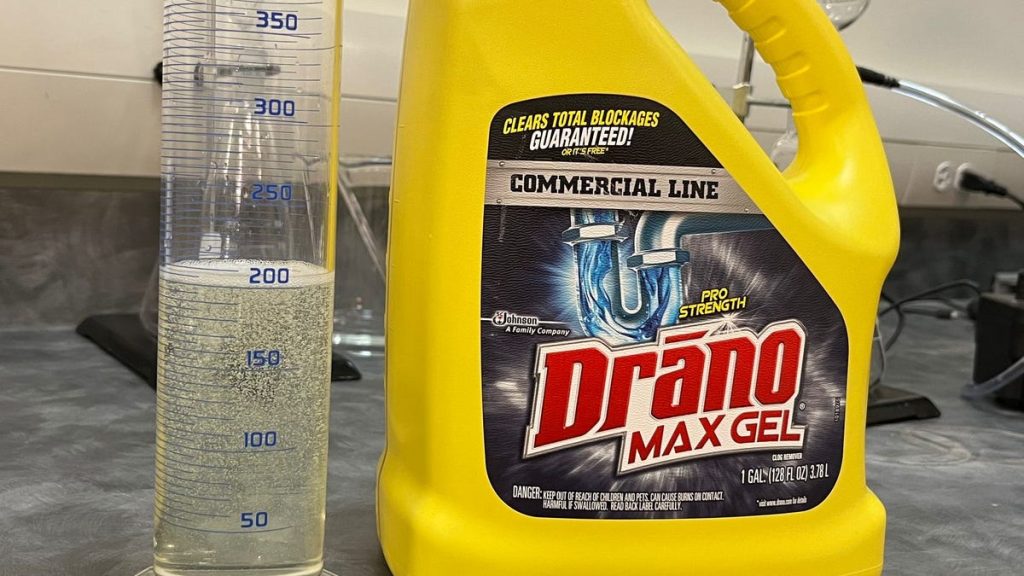In a comprehensive batch distillation experiment conducted at CNET’s product testing lab in Louisville, Kentucky, the efficiency of eight commonly used chemical drain cleaners was tested. The goal was to determine how well each product dissolved various types of clogging materials, including organic matter, grease, paper products, and pet hair. pH levels, chemical composition, and versatility of use were also considered during the experiment. The drain cleaners were classified into acids and bases, with acids being more hazardous due to their potential for corrosivity and causticity. Safety precautions were taken during the experiments to minimize exposure to hazardous fumes.
Specific amounts of clogging materials were weighed and mixed with basic and acidic drain cleaners in separate beakers. Water was added after the recommended time for each cleaner, as it facilitates the transportation of the cleaner to clogs and distributes the solution evenly. After incubating the mixtures overnight, a vacuum filtration process was used to separate the debris from the cleaner solution. The filtered debris was subjected to a fan-drying process to remove any residual water, and the final weight was compared to the initial weight to determine the dissolution efficiency of each drain cleaner product. The experiment highlighted the importance of water in the effectiveness of chemical drain cleaners.
Acidic drain cleaners, such as those containing sulfuric acid, were found to be more hazardous compared to their basic counterparts. The experiment showcased the immediate exothermic reaction and release of hazardous smoke that occurs when water is added to a highly concentrated acid. Proper safety precautions, such as wearing personal protective equipment and conducting the experiments in a well-ventilated area, were crucial in ensuring the safety of the researcher. Understanding the corrosivity and causticity of different drain cleaners based on their acidity or basicity is essential in handling these products safely.
The inclusion of water in the dissolution test was a key factor that differentiated this experiment from others found online. Chemical drain cleaners are designed to work effectively in the presence of water, which helps in evenly distributing the solution over clogs and facilitating the dissolution process. The experiment emphasized the importance of following the instructions provided with each drain cleaner to achieve optimal results. By measuring the pH levels and observing temperature changes, the efficiency of each product in dissolving various types of clogging materials was evaluated.
The vacuum filtration process used in the experiment allowed for the separation of debris from the cleaner solution, providing a way to measure the dissolution efficiency of each drain cleaner. By comparing the final weight of the debris samples to their initial weight, the effectiveness of the products in breaking down clogs was determined. The experiment showcased the significance of proper filtration and drying processes in assessing the efficiency of chemical drain cleaners. Overall, the results of the experiment provided insights into the performance of different drain cleaners and highlighted the importance of water in their effectiveness.












